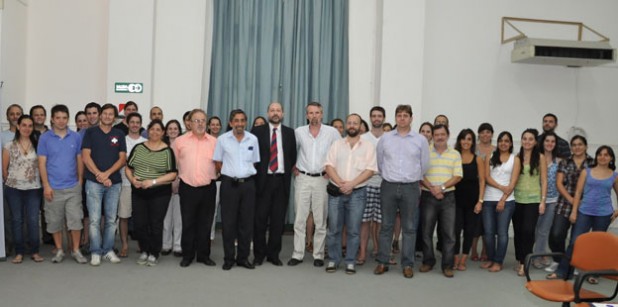Five-year spending plan backs massive investment in research and scientific facilities.
Spending plans that would give a huge boost to India's science spending and back the country's participation in several international science projects have brought researchers some unexpected festive cheer.
India's Twelfth Five Year Plan proposes earmarking 1,204 billion rupees (US$24 billion) for research and development (R&D) in six key scientific departments between April 2012 and March 2017 — more than 2.5 times what the country spent over the previous five-year period. Although the plan does not commit the government to making the proposed increases, it has buoyed the hopes of the nation's scientists after a disappointing science budget earlier this year.

The Indian Prime Minister's science adviser, C.N.R. Rao, has welcomed the proposed increases to R&D budgets.
BISWARUP GANGULY
The plan, published on 27 December, backs Indian investment in the Square Kilometre Array — the world's most powerful radio telescope, now being built in Australia and South Africa — and the Thirty Meter Telescope, a proposed optical telescope that would be built on Mauna Kea, Hawaii. An India-based neutrino observatory and a next-generation synchrotron are among the domestic facilities that are mentioned as funding priorities over the next five years. The plan also includes the goal of increasing the number of PhDs the country produces each year, from 8,900 to 12,500, and raising the number of full-time researchers from 154,000 to 250,000. Publications by Indian researchers should account for at least 5% of the world's total by 2017 (up from around 3% today), improving India's global ranking from ninth to better than sixth.
The Department of Space, which gets the largest share of the proposed R&D budget, is to undertake 58 missions during the five-year period, including a mission to Mars in November 2013 and a follow-up to the country's 2008 Moon mission. India's biggest science agency, the Council of Scientific and Industrial Research, should plan to set up five new institutes in areas including systems biology, biomimetic materials and solar energy. Meanwhile, the Department of Science and Technology is set a target of helping to create 25 nanotechnology start-up companies and encouraged to push forward with plans to make India one of the top five nations in the world for supercomputing by building a peta-scale computer.
The Department of Biotechnology should press ahead with building five new research centres, and the Ministry of Earth Sciences should establish a National Centre for Seismology and pursue plans to drill an 8-kilometre-deep borehole in western India for seismological studies. There is also cash for the Department of Atomic Energy to build two research reactors at its two new campuses in Hyderabad and Visakhapatnam.
Overall, the 1,204 billion rupees for R&D is nearly double the 750 billion rupees allotted in the eleventh plan — although the actual spending over the five years covered by the eleventh plan came in at 475 billion rupees.
C.N.R. Rao, science adviser to Indian Prime Minister Manmohan Singh, welcomed the proposed boost to R&D spending but warned that, if it materializes, researchers might struggle to spend the money. "Sometimes I worry whether we have enough good people to use the research funds," he told Nature.
Some senior researchers are also sceptical of the new plan's aim to stimulate science spending by Indian businesses. India spends 0.9% of its gross domestic product (GDP) on R&D, and that is pegged to rise to 2% by 2017, with the private sector's contribution rising from just 0.2% to 1% of GDP. The government hopes to rope businesses into spending more on science through public–private partnerships. Around 10–15% of the R&D investment in the plan has been earmarked for such partnerships.
"I doubt if we could reach 1% of GDP on R&D by the corporate sector," says Lingadahalli Shashidhara, a biologist at the Indian Institute of Science Education and Research in Pune. The culture of businesses funding research by public organizations is alien to India, Shashidhara says.
But he adds that none of the targets set out in the twelfth plan are completely out of reach. "I am very optimistic about Indian science," he says.
Fonte: Nature













